Using the arrow keys to navigate between cells in Excel is a fundamental feature for efficient data management. When Scroll Lock is activated, however, pressing the arrow keys scrolls the entire worksheet instead of moving between individual cells. If your keyboard lacks a Scroll Lock key, turning it off might seem challenging. Fortunately, there are several ways to disable Scroll Lock in Excel, ensuring smooth navigation.
Checking if Scroll Lock Is Enabled
Before disabling Scroll Lock, it's useful to verify if it's currently active in Excel.
Step 1: Look at the status bar at the bottom of the Excel window. If Scroll Lock is enabled, you'll see "Scroll Lock" displayed there.
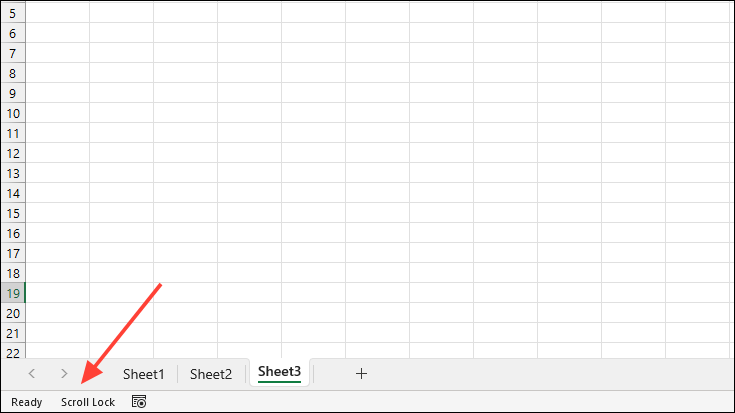
Step 2: If you don't see "Scroll Lock" in the status bar, you need to enable this indicator. Right-click anywhere on the status bar to open a contextual menu with various options.
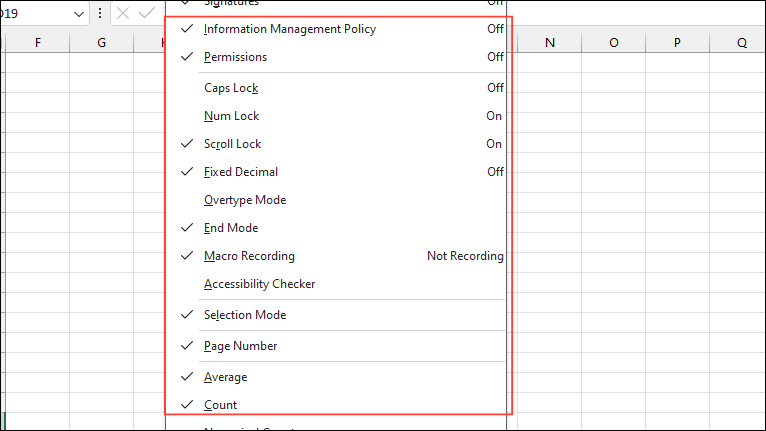
Step 3: In the menu, click on the 'Scroll Lock' option to select it. This will ensure that the status bar displays the Scroll Lock status whenever it's enabled.
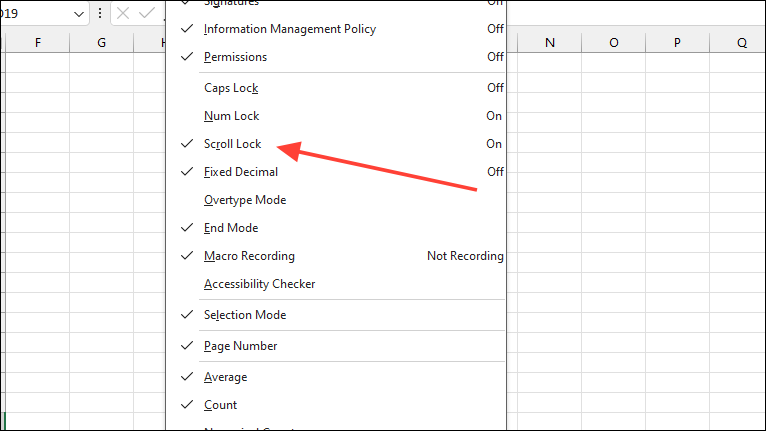
Disabling Scroll Lock in Excel
Using the On-Screen Keyboard
If your keyboard doesn't have a Scroll Lock key, you can use the On-Screen Keyboard in Windows to turn it off.
Step 1: Press Ctrl + Windows + O on your keyboard to open the On-Screen Keyboard. Alternatively, click the 'Start' button, type 'On-Screen Keyboard', and select it from the search results.
Step 2: When the On-Screen Keyboard appears, look for the 'ScrLk' (Scroll Lock) key. If Scroll Lock is enabled, the key will appear highlighted or in a different color.
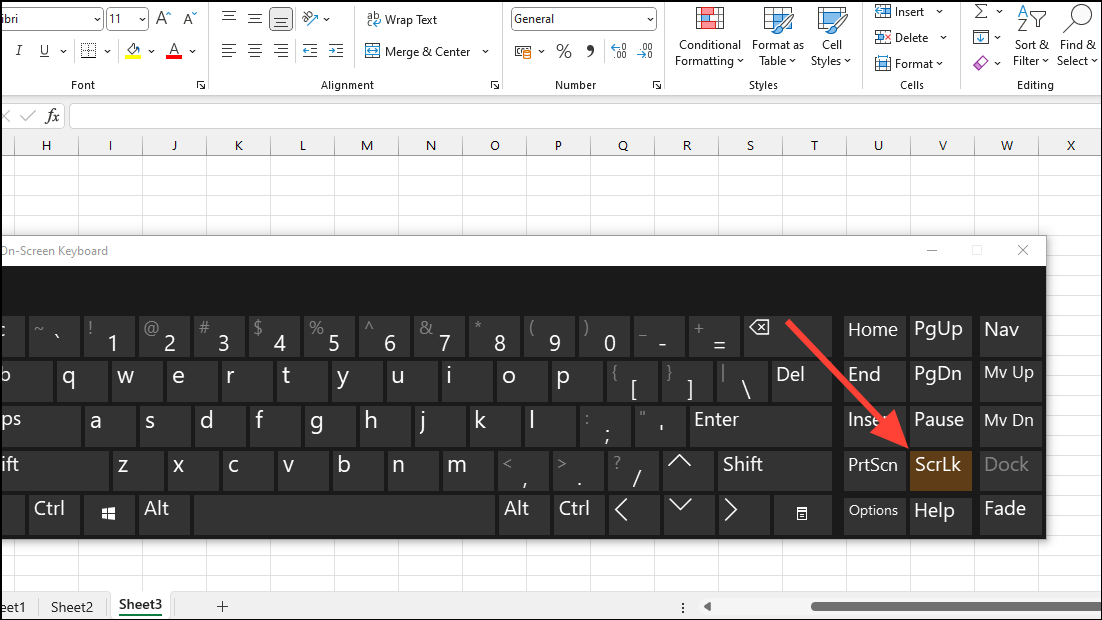
Step 3: Click on the 'ScrLk' key to toggle off Scroll Lock. The key's color should revert to match the other keys, indicating that Scroll Lock is now disabled.
Through the Options Menu
If the scroll bars are missing from your Excel worksheet, you might need to adjust the settings to re-enable them.
Step 1: With your Excel workbook open, click on the 'File' tab located at the top-left corner of the window.
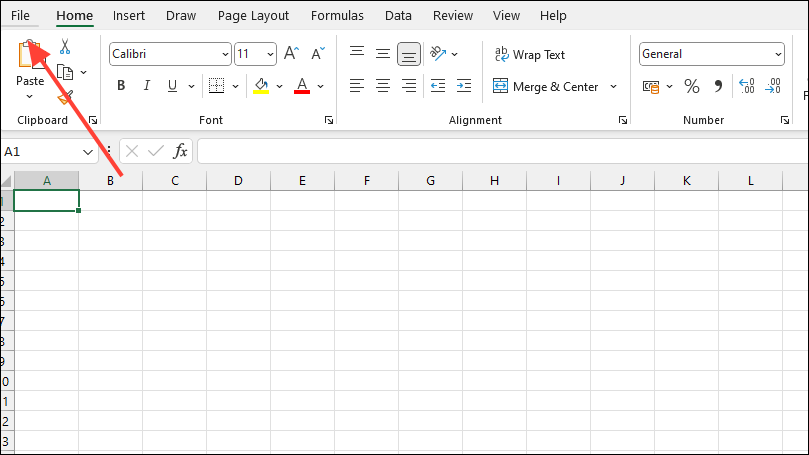
Step 2: In the sidebar that appears, select 'Options' at the bottom-left to open the Excel Options dialog box.
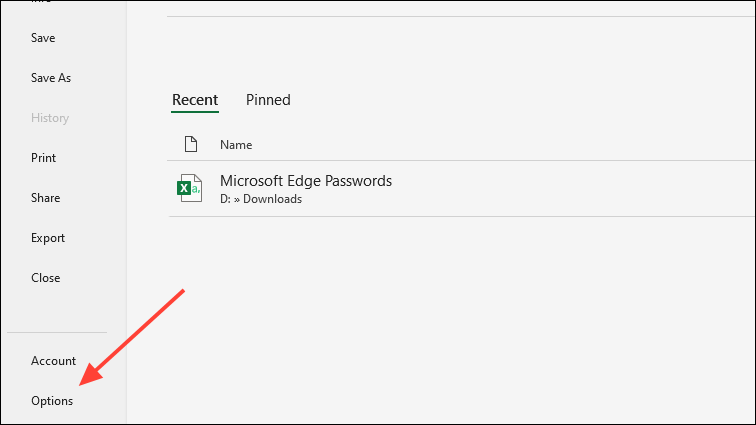
Step 3: In the Excel Options window, click on 'Advanced' in the left-hand menu to view advanced settings.
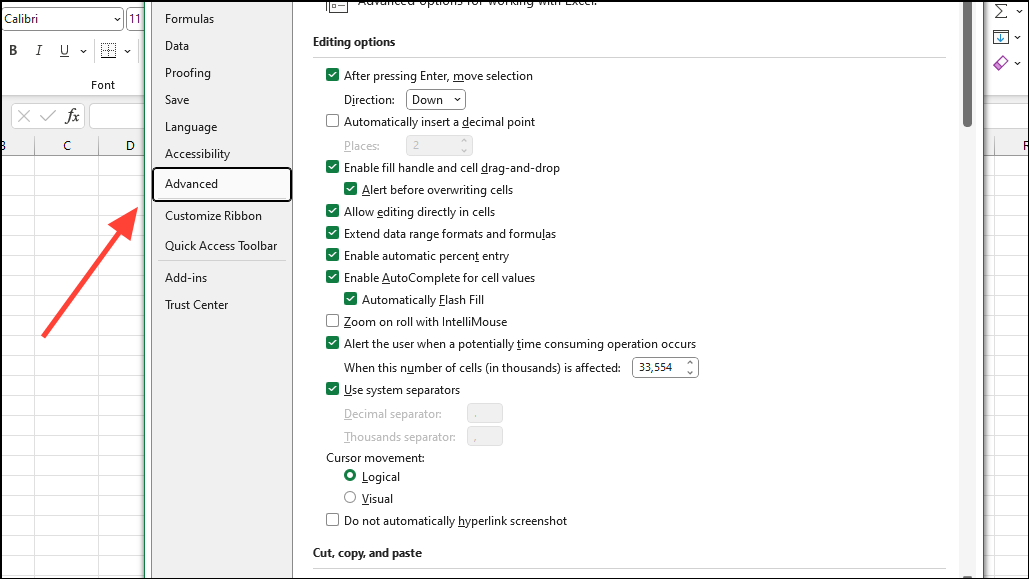
Step 4: Scroll down to the 'Display options for this workbook' section. Ensure that both 'Show horizontal scroll bar' and 'Show vertical scroll bar' are checked.
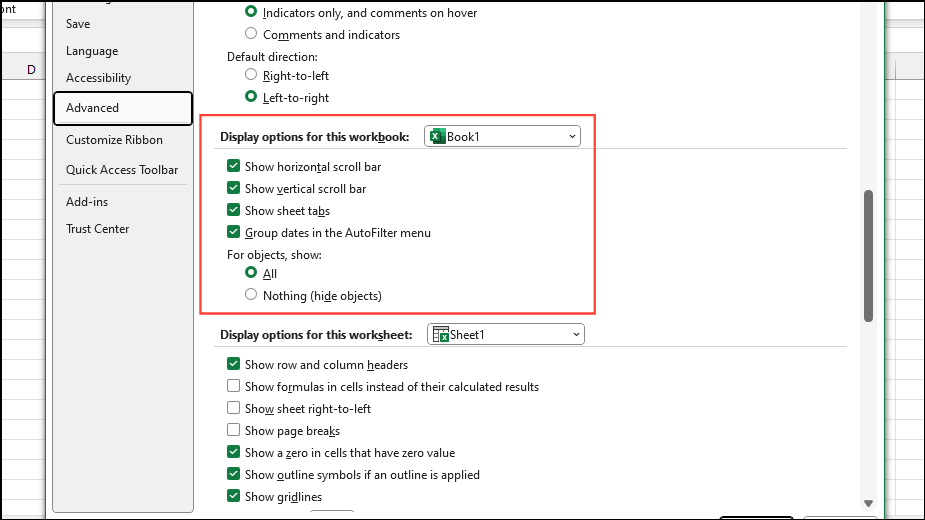
Step 5: Click 'OK' to apply the changes. The scroll bars should now appear, allowing you to navigate through the worksheet.
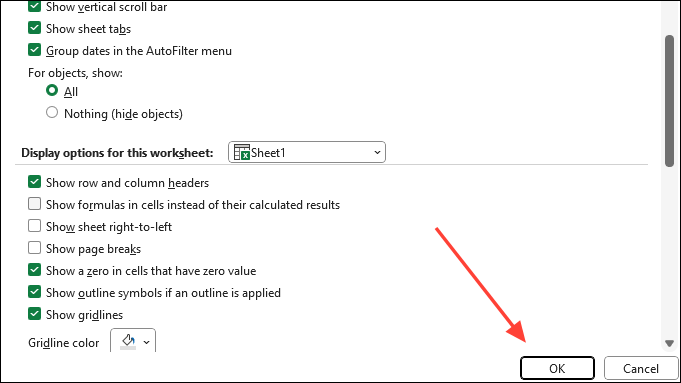
From the Properties Menu
If you're able to scroll and use arrow keys only within a limited range of cells, the 'ScrollArea' property might be restricting your movement.
Step 1: Open Excel and click on the 'File' tab, then select 'Options' to open the Excel Options dialog box.
Step 2: In the Excel Options window, choose 'Customize Ribbon' from the left-hand menu.
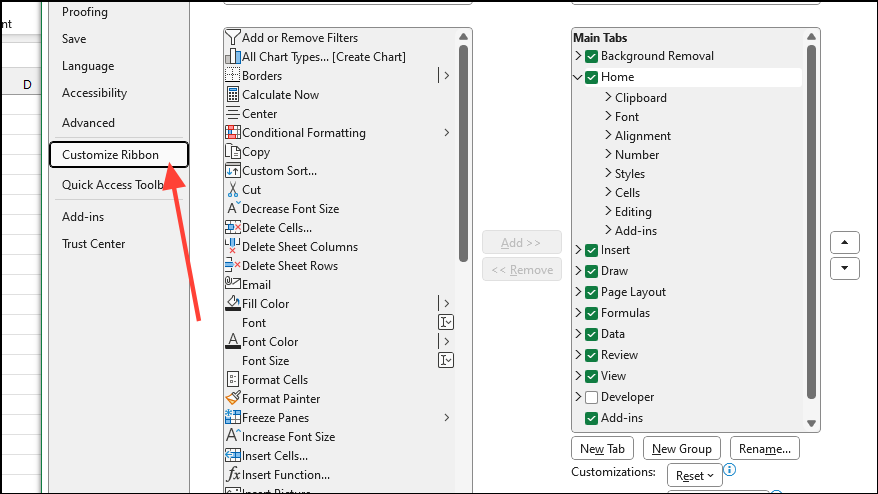
Step 3: Under the 'Main Tabs' list on the right, check the box next to 'Developer' to enable the Developer tab, and then click 'OK'.
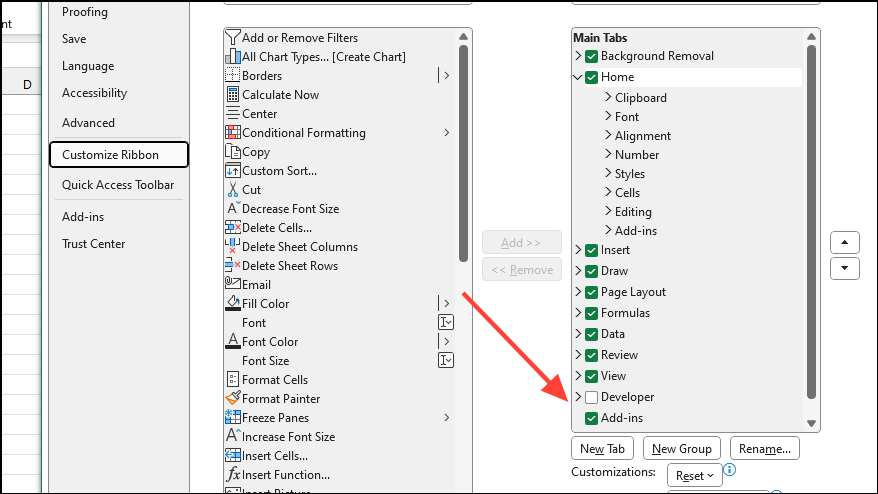
Step 4: Click on the newly added 'Developer' tab in the ribbon, and then select 'Properties' from the Controls group.
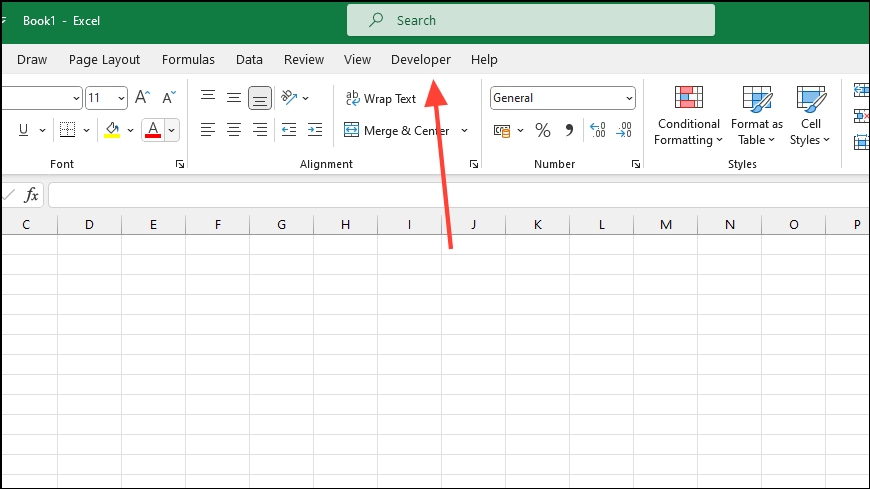
Step 5: In the 'Properties' pane that appears, locate the 'ScrollArea' field near the bottom.
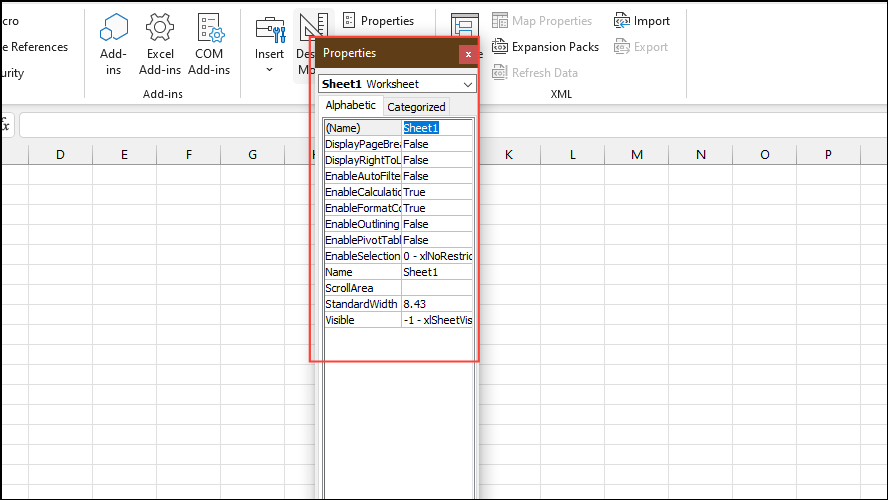
Step 6: If there is any text in the 'ScrollArea' field, delete it to clear the field. This removes any range restrictions on scrolling and navigation.
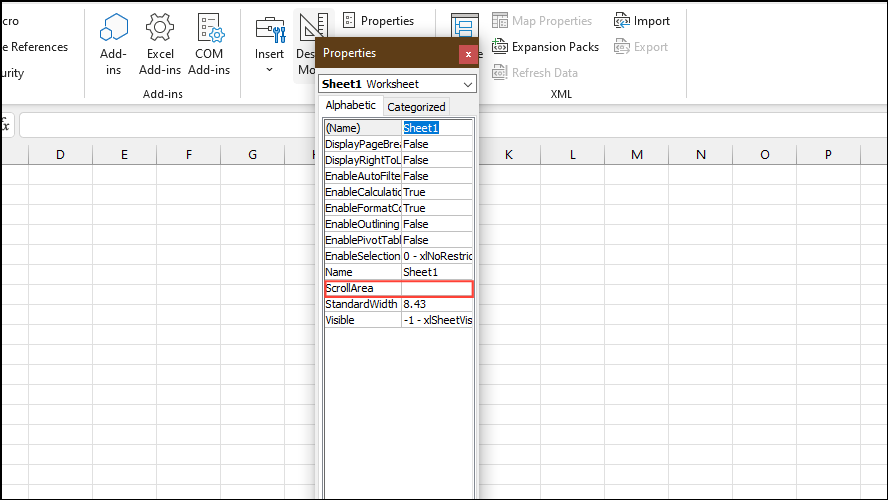
Step 7: Close the 'Properties' pane. You should now be able to navigate freely throughout the worksheet using the arrow keys and scroll bars.
Disabling Scroll Lock with VBA
Visual Basic for Applications (VBA) can automate tasks in Excel, including disabling Scroll Lock across all worksheets.
Step 1: Open Excel and enable the 'Developer' tab as described earlier.
Step 2: Click on the 'Developer' tab and select 'Visual Basic' from the Code group to open the VBA editor. Alternatively, press Alt + F11 to open it directly.
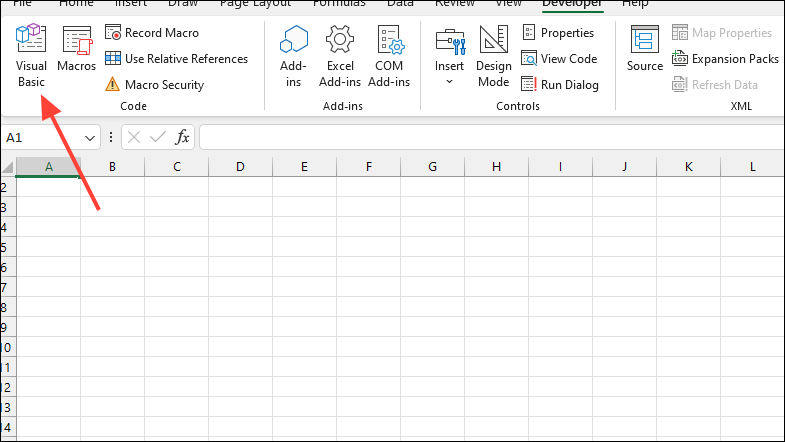
Step 3: In the VBA editor, click on the 'Insert' menu and select 'Module' to create a new module.
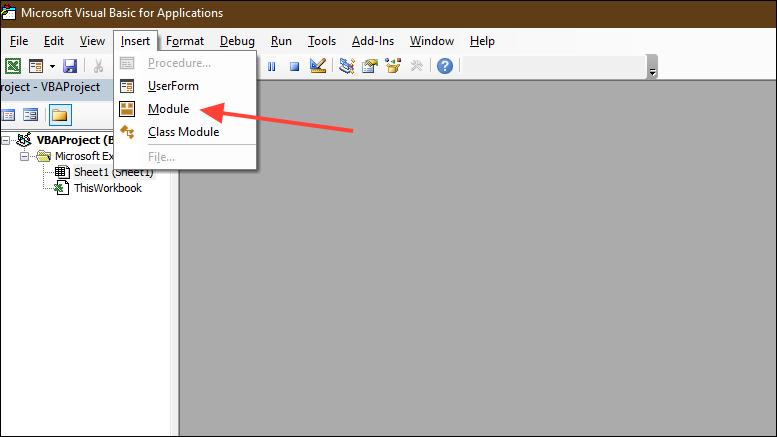
Step 4: In the new module window, type or paste the following code:
Sub DisableScrollLock()
Dim ws As Worksheet
For Each ws In ThisWorkbook.Worksheets
ws.ScrollArea = ""
Next ws
End Sub
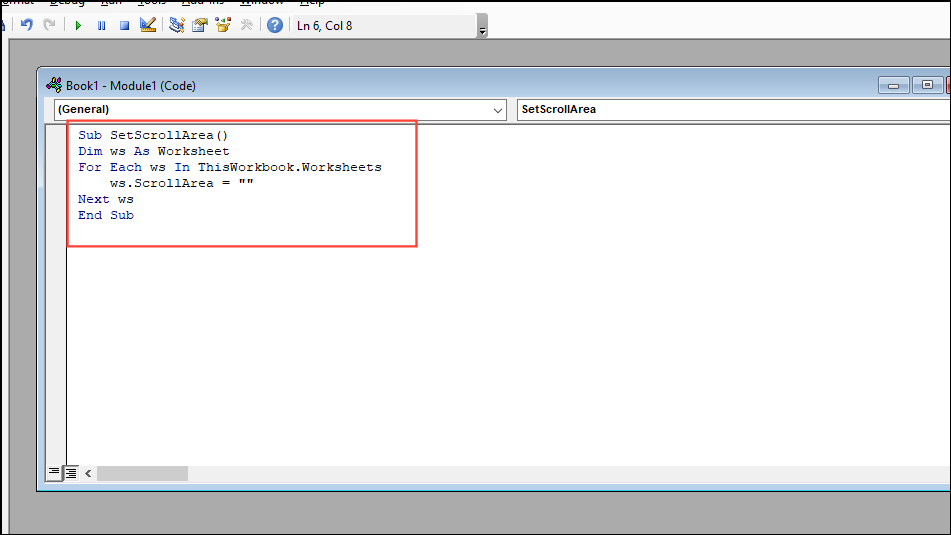
Step 5: Close the VBA editor. Back in Excel, press Alt + F8 to open the 'Macro' dialog box.
Step 6: Select 'DisableScrollLock' from the list and click 'Run'. This macro will reset the 'ScrollArea' for all worksheets, effectively turning off Scroll Lock.
By following these methods, you can easily disable Scroll Lock in Excel, even if your keyboard doesn't have a Scroll Lock key. These solutions are applicable across all Windows systems, ensuring smooth navigation in your spreadsheets.











Member discussion